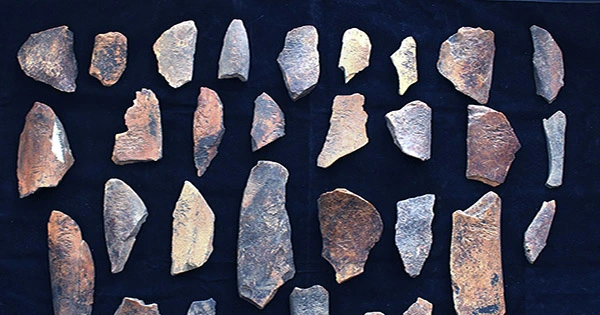We take extensive communication for granted, yet even only a few centuries ago, it would take weeks to send a letter across the nation, assuming it even got there at all. However, a recent study by scholars from around the world has demonstrated that communication and technology transfer are as ancient as mankind. What evidence do they have? It all boils down to a single stone instrument known as a “backed artifact” – or, to put it another way, the “stone Swiss army knife.”
It’s a little object, measuring just around five centimeters in length, yet it’s tremendously useful. It was utilized for almost everything by our forefathers, including dealing with bone and hide, as well as drilling and shaping wooden products. The tools have been found in a variety of forms all throughout the world, from China to Europe to Australia. Something unusual happened around 65,000 years ago. The backed items began to have the similar pattern everywhere throughout southern Africa.
“Backing artifacts are produced in enormous numbers across southern Africa during the Howiesons Poort [technological period of prehistory], and it is this abundance that speaks to their success in this region at this time,” explains the study, which was published today in the journal Scientific Reports. “The Howiesons Poort backed artifacts are built to a similar template across enormous distances and diverse biomes, according to our morphometric research.”
That’s crucial: the only way these instruments could have been so comparable over such huge distances is if these early people were conversing with one another. In a statement, Paloma de la Pea, co-author of the study and Senior Research Assistant at the McDonald Institute for Archaeological Research, Cambridge University, said, “While the making of the stone tool was not particularly difficult, the hafting of the stone to the handle through the use of glue and adhesives was difficult, which highlights that they were sharing and communicating complex information with each other.”
“What was especially surprising was how the profusion of implements with the same form corresponded to significant variations in environmental circumstances.” “We believe this is a societal response to the changing environment in southern Africa,” she continued. The study reveals more than just our ancient predecessors’ networking ability; it also sheds light on why humans has become such a globally successful species.
“People have been walking out of Africa for hundreds of thousands of years, and we have evidence for early Homo sapiens in Greece and the Levant dating back to roughly 200 thousand years ago,” said Amy Way, an archaeologist at the Australian Museum and University of Sydney. “However, the massive exodus approximately 60-70 thousand years ago, which involved the ancestors of all contemporary people that live outside of Africa today, overprinted these earlier exits,” she continued.
To put it another way, when did these backed relics begin to proliferate over the continent? The strength of social networks and communication was critical to the success of both the migration from Africa and the stone Swiss army knife. “For the first time, this study indicates that these social links existed in southern Africa right before the huge migration,” Way said.
So, in the face of significant climate change and massive migration, our ability to cooperate has proven to be the glue that has held mankind together. That’s vital not just for comprehending the past, but also for predicting the future. “Understanding our evolutionary history requires examining why early human groups were successful,” stated Kristofer Helgen, Chief Scientist at the Australian Museum. “This study adds to our knowledge of those social networks and how they contributed to the spread of modern humans across Eurasia,” says the author.















